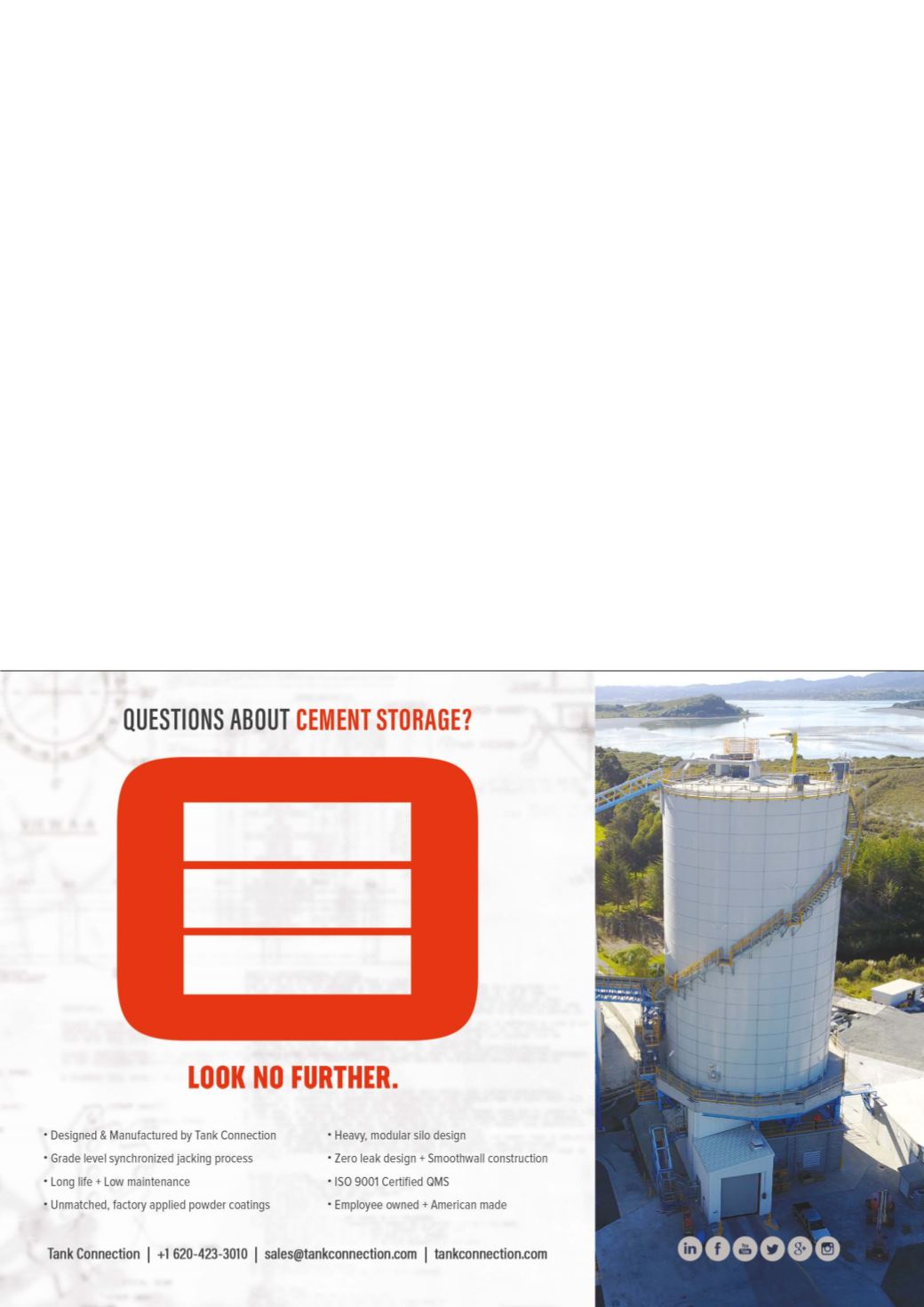
41
North America 2019
World Cement
performance data. It is known that the working
horsepower needed to operate the bucket elevator is
46 hp. Using the standard torque calculation obtained
from speed and horsepower, the working torque
required is 135 lb-ft (183 Nm). The 60 hp. motor can
deliver a locked rotor torque of 320 lb-ft (434 Nm) and
deliver 235%more torque than needed. Certainly, the
60 hp. motor has the ability to easily break the load
free from the worst case scenario discussed.
A Baldor-Reliance
®
induction motor #ECP4314T-4
was chosen. With the selection of a smaller motor
via size optimisation, there is a slight improvement of
the running efficiency, a greater improvement of the
power factor, and a reduction of the overall weight
of the motor by over 1000 lbs (454 kg). All of these
factors contribute to the plant saving money on future
operational and installation costs.
Service factoring a gear reducer
In the US, a bucket elevator is an AGMA Class II
application for a 24 hour/day operation. In short,
it is suggested that the replacement gear reducer
mechanical rating, at a minimum operating output
speed of 28 RPM, is at least 40% greater than the
working horsepower needed to turn the load. In the
above case, since the interpolated working rate is
46 hp. (34.3 kW), the replacement gear reducer
should be mechanically rated at minimum as 64.4 hp.
(48.0 kW), or as 46 hp. x 1.40 service factor. It is
important to note that a dichotomy is present when
service factoring gear reducers. Many tend to service
factor directly from the horsepower indexed on the
motor nameplate. All the while, others choose to
service factor from the working horsepower required
to turn the load. There is no right or wrong with either
method, but there are potential outcomes that can
result.
It is critical to recognise that when a motor
nameplate horsepower, say 125 hp. (93 kW) in this
example, well exceeds the mechanical rating of a
gear reducer, or 72.3 kW (97 hp.), the consequences
could be dire. A motor operated across the line will
continue to deliver additional working horsepower
up to and well over its rated horsepower, until either
a gear reducer or coupling catastrophically fails due
to overload. Unless the motor amperage is limited by
a variable frequency drive or motor overload circuit,
the motor will continue to draw amperage until critical
equipment is destroyed and the application rendered
useless. Fortunately, in this example, this conceivable
occurrence was never a reality.
The required working horsepower was determined
to be 46 hp. (34.3 kW). All the while, the original
reducer was mechanically rated for 97 hp.
(72.3 kW), leaving a working service factor of 2.11
(or 97 hp./46 hp.). As it turns out, this is a robust
service factor for the bucket elevator head drive. This
is known as service factoring a gear reducer from
an established working horsepower, as determined
by the original equipment manufacturer. Alternatively,
service factoring a gear reducer from a rated motor
horsepower is not necessarily a poor practice.








